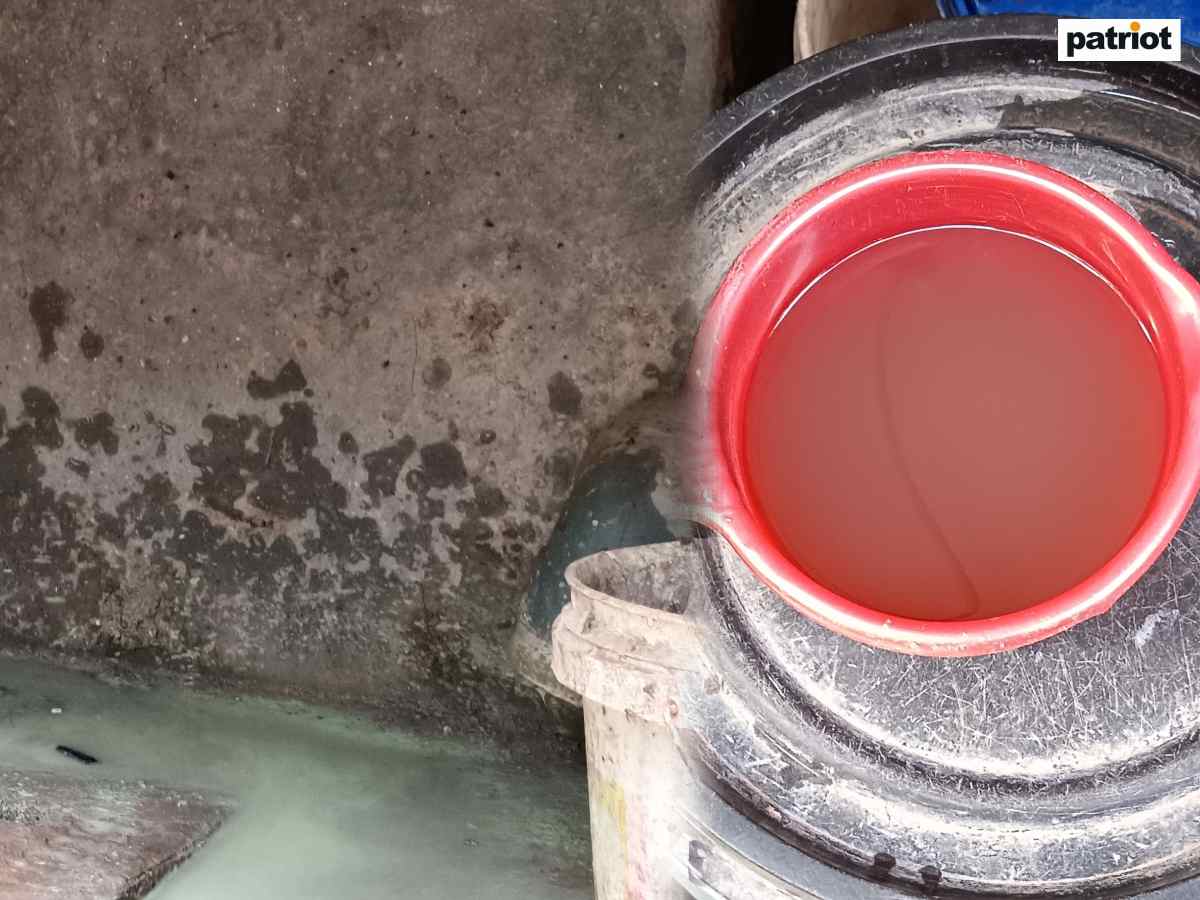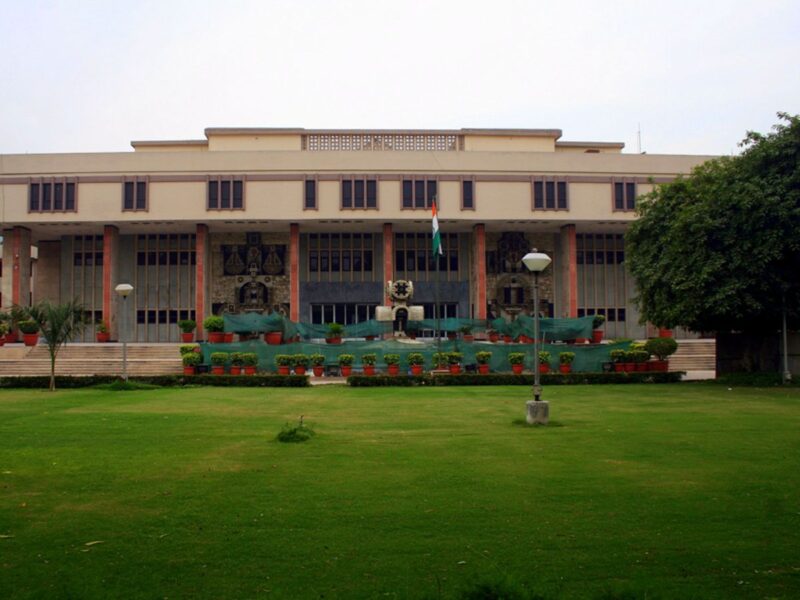Delhi: While the scarcity of water has drawn attention, contamination of water has been swept under the rug.
According to sources close to the Delhi Jal Board, contaminated water has affected many areas of East and West Delhi. Localities in Ashok Vihar, Nasirpur, Mahavir Enclave, Ghazipur Village, Paschim Vihar, Kakrola, and Santosh Park, have been affected, according to daily quality control updates that the DJB receives.
Patriot visited five of these areas to ascertain the ground realities.
Ghazipur Village
The situation is concerning inside Ghazipur, Delhi’s largest village. Only a few houses are getting their share of water from the pipelines. However, residents complain that whatever water they are getting is mostly contaminated. Within the narrow alleys and an array of private primary schools, lie many buildings under construction, due to which a considerable number of pipelines have been ruptured, according to residents.
“There are pipelines here, set up by the DJB. However, the construction of buildings has broken the pipelines. Even before construction, only a few houses were being supplied with water. Moreover, there is only a certain time till when we get water, and that is suitable only for washing and other purposes. After around two in the afternoon, we have to fend for ourselves as the water deteriorates in quality, and it doesn’t get better until the very next day,” said Krishna Kumar, a shopkeeper inside the village.
According to Kumar, the water smells like sewage and although it has never been fit for drinking, it is also unfit for cleaning and washing.
“This has been happening for the past three months, maybe a bit more than that,” he said.
Some people have turned the scenario into a money-making scheme. Without water tankers visiting the village, shopkeepers have taken to providing residents with water through submersible connections.
“People are desperate here. If it were left to me, I would not charge them anything but again I have to ensure that my water pump also works alright without any issues. Technically, it should be DJB’s duty to come to our locality,” said Charan Singh, who has set up shop beside Kumar’s grocery store.
Also read: Delhi: Discoms request consumers to follow safety precautions in view of monsoon rains
Presently, he is selling water for Rs 15 per two litres. Most residents bring water drums, empty oil tin cans, or whatever container that they can lay their hands on. They ensure not to take more than they can afford, rationing their needs with each can filled.
“Not one tanker has come to our locality since it all began,” said Ashish Tripathi, who has skipped college most of June, only to devote more time to fetching water for his family.
Mahavir Enclave
A similar scenario prevails at Mahavir Enclave, near Uttam Nagar, where having a water supply is more of a bane than a boon. A clean water supply remains a dream in these parts and has been a dream for the past year. Residents have complained to the water supply department regarding the quality of water on multiple instances. However, their calls have gone mostly unnoticed.
Rekha Dedha (name changed) highlighted that her house and the households in her area at Mahavir Enclave Phase 3 have not received clean water in the past six months.
“The scenario has turned into such that we either get dirty water or no water at all. The water that we get is unfit for any purpose, not even cleaning the house,” she said.
Rashmi Singh (name changed) added that the colour of the water is also such that it warrants several tests by the DJB. “The (Delhi) Jal Board should look within themselves to understand what exactly is going wrong. The water that we get smells like sewage and looks like sewage too,” she said.
Presently, the residents are being supplied water in two hues. It is mostly yellow, which smells and looks like urine, while very seldom the water is clear, although the stench of sewage lingers.
As of now, most residents rely on water tankers which come twice a week.
Other residents say that they do not like being at the mercy of the DJB and had to fit their own submersible pumps to extract groundwater.
“As it is, we do not get sufficient water from the regular water supply here and whatever we get is dirty. There is no household in the locality which does not have a submersible. Most people also have water purifiers installed to ensure that they get good quality water, otherwise everyone would have had to buy water jars,” said Avinash Gupta, who helps his father look after their stationery shop.
Nasirpur
At Dwarka’s Nasirpur, however, the scenario is a bit different. The modernisation of a sewage line here has led to the water quality deteriorating by the day. The locality’s roads remained dug up for the past year before the civic bodies decided to act upon the complaints of the residents.
“Earlier, sewage was overflowing since the pipes were thin and just under the surface. Officials from the civic body fixed it eight months ago and fixed a thicker pipe and placed it much beneath the ground but that also marked the beginning of the supply of dirty water,” said Ajit Singh Kataria, a resident.
Some residents added that at present, they are supplied with different qualities of water.
“Here we receive three kinds of water which are different in texture, colour and quality. Sometimes we receive the normal, white kind of water, which smells and remains brackish. Sometimes the water is brown and smells like it has mixed with the sewage here, while the texture is on the rougher side. The quality is at its worst when the water is all yellow and smells like urine. In all certainty, there is some issue with the pipeline here but the DJB should be coming here to check it,” said Suresh Mahato, another resident.
Presently, according to residents, tankers from the water supply body had not yet ventured into the locality. They had called them multiple times but the residents complained that these tankers only provide water to a handful of residences.
How unclean is Delhi’s water
Sources have said that from June 16 to June 19, the DJB noted 53 unique samples from multiple localities in the national capital. The sample collections illustrate that none of the samples collected from the water treatment plants were found to be contaminated. However, it was outside the plants that the samples collected showed signs of concern.
On average, the DJB, alongside private agencies, tested 598 samples in the four days.
According to a senior DJB official, contamination has become prevalent in the national capital because of impurities in the pipelines.
“Most of our pipes which supply water are very old and have not been revamped in a very long time. This sometimes makes it easier for impurities to seep in and the impurities can range from rust to sewage water. If we have to revamp the entire system, there needs to be some amount of balance in the system, and we should have access to resources,” he said.
The official highlighted that during the tussle between the Centre and the Aam Aadmi Party (AAP)-led government, the DJB was being eroded of all its resources.
“There are multiple vacancies that are yet to be filled. We are functioning with the same strength. One of the Superintendent Engineers has been entrusted with nine other portfolios. We are barely getting by, especially with the lack of water supply,” he said.
Also read: Delhi heat: Dance of death in the national capital
The publicly available water quality report
Earlier, DJB used to publish the daily water quality report on their website alongside a public circular informing them of the same. The last time the report was published was on January 30, marking the end of the practice that began on January 1, 2019. In the same time-frame in 2023, there were 43 reported instances of water samples being dirty.
According to DJB officials, clean water is supplied only till a certain amount of time at certain places, and if residents start their motor pumps at other times, the dirty residual water gets supplied to them.
Patriot had visited East Delhi’s Trilokpuri in May. The residents there complained of receiving bad quality water throughout the day.
Delhi minister Atishi has commenced a hunger strike to death against the Haryana government. She claims that only 513 MGD of water has been released as against the 613 MGD Delhi is slated to get.





